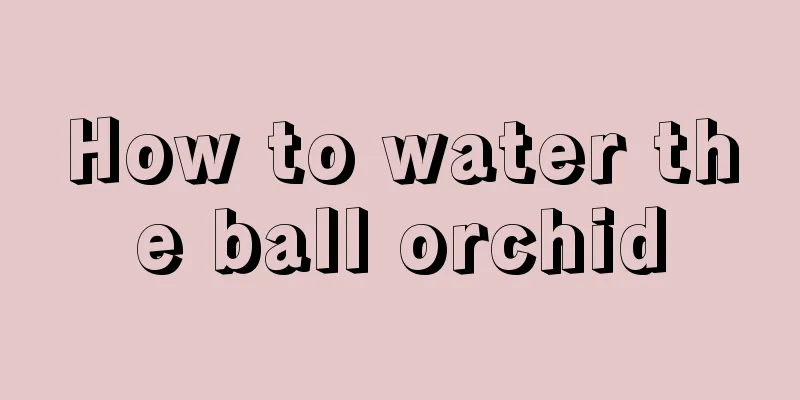How to water the ball orchid

|
When watering Hoya, pay attention to the temperature, season, and amount of water. Too much water and it will rot. There is less water and it is dry, which is very distressing. Summer is quite hot and humid, so we will water your Hoya more. If the ventilation is poor during this process, root rot is normal. If the soil is not permeable, although the roots will rot, the surface will still look good, and death is inevitable. So how should you water the Hoya? Watering timeIn fact, when watering Hoya, you need to pay attention to two stages: summer and winter. In summer, watering is usually done by spraying at 7 am, opening the windows for ventilation after 10 am (note: do not water at this time), and closing the windows at 4 pm. Next you can start watering, first wet the surrounding environment, and then water the flowerpot. The watering steps in winter are roughly the same. Spray around 8 am, then let the ball orchid fully enjoy the morning sunshine. Around 11 am, open the windows for ventilation. Of course, this method is suitable for sunny days, and avoid rain when ventilating on rainy days. Watering frequencyIn summer, you can water it once a day and spray it 2 to 3 times to ensure that the growth environment of the ball orchid has sufficient humidity. The temperature is lower in winter, so reducing the amount of watering appropriately and ensuring that the soil in the pot is properly dry can avoid frost damage. Symptoms of abnormal wateringYellow leaves, which are bright and hard, indicate excessive watering and poor root breathing. Dull and wilted leaves may be caused by insufficient water and oxygen supply due to insufficient watering, or by uneven watering of the roots and insufficient absorption of water by the roots. Burnt tip: The top of the plant turns black and then dries up. This is caused by excessive watering which causes the roots to become too stuffy. PrecautionsIn soil culture environments, water seepage is too fast or too slow during watering ; In soil culture environments, water seeps out quickly when watering, but the soil is not completely saturated with water ; Excessive watering during long periods of cloudy days, hot summers and high humidity can easily cause the roots to become over-wet ; when the temperature is low in winter, lack of proper water control can cause the roots to become cold and damaged. |
<<: How to make marigolds flourish
Recommend
Can maple trees be grown indoors?
Can maple trees be grown indoors? Maple trees can...
Can trumpet creeper overwinter outdoors?
Trumpet creeper is a perennial deciduous vine tha...
There is no light at home, but you can still make these 6 plants bloom
1. White Anthurium Shade tolerance index: ★★★★★ D...
What to do if the leaves of Kalanchoe are small and dense
1. Supplement fertilizer Reason: There is not eno...
How to prune lilies and what to pay attention to
Lily pruning time Lilies can be pruned three time...
The difference between forget-me-not and lavender
1. Differences in flowers The flowers of forget-m...
The origin of the name of Strelitzia
Strelitzia reginae Although Strelitzia reginae is...
What are the vegetables that can be picked repeatedly?
lettuce Lettuce is a very common vegetable in our...
When is the best time to plant bamboo?
The timing of bamboo planting needs to be determi...
How often should sunflowers be watered?
How often should you water your sunflowers? Sunfl...
When to plant lily bulbs
Before planting lily bulbs, you should choose a s...
Mimosa pudica growth environment conditions and characteristics
Mimosa pudica growth environment conditions and r...
5 common methods of cutting propagation
Plant propagation by stem cuttings Terminal bud c...
What fertilizer is best for jasmine?
Jasmine fertilizer Jasmine likes fertilizer, and ...
Can mint prunings survive? How to propagate the cut branches and leaves?
Can mint cuttings be planted alive? Mint cuttings...









